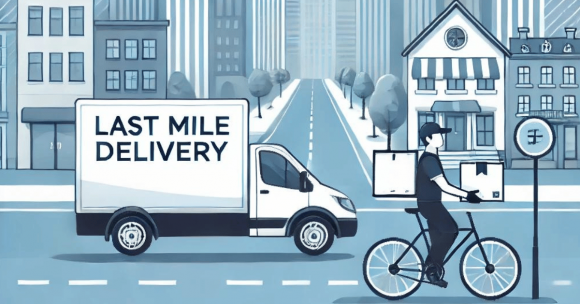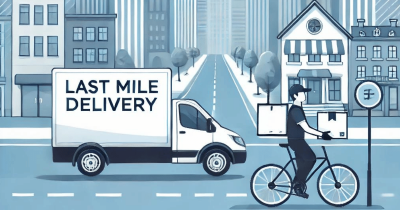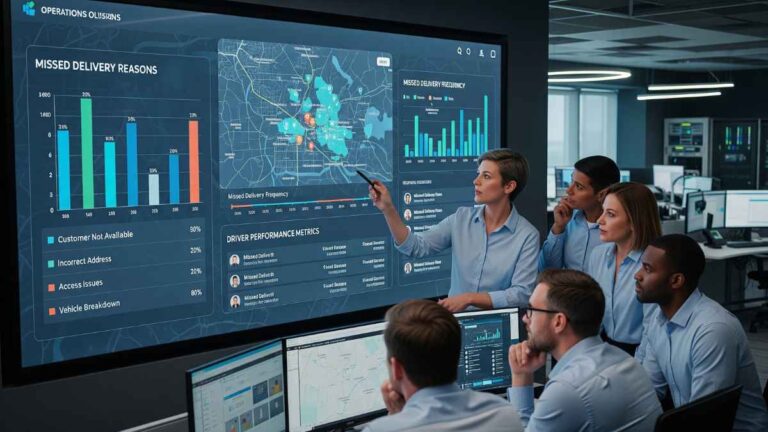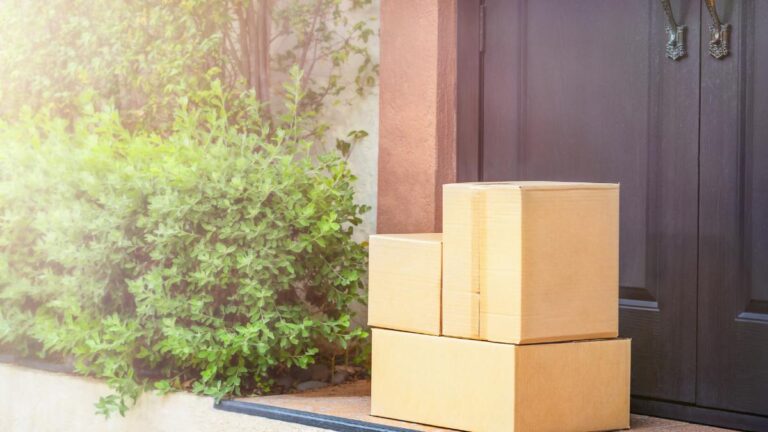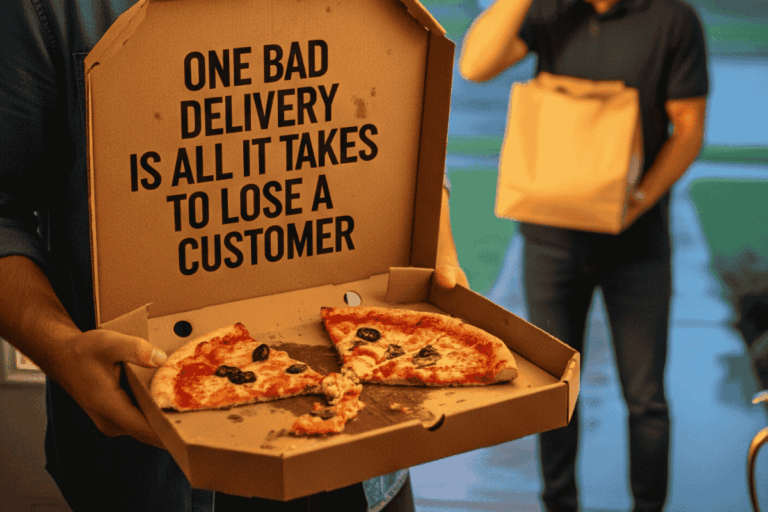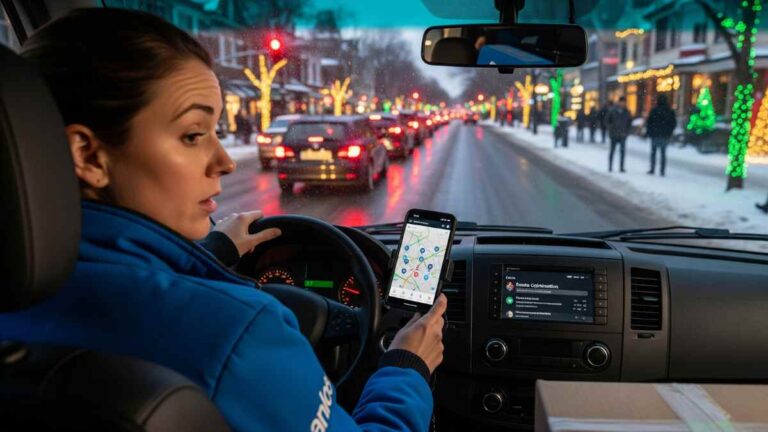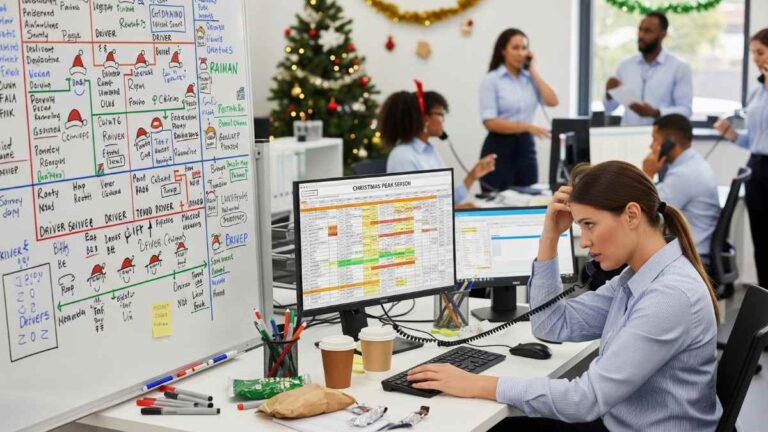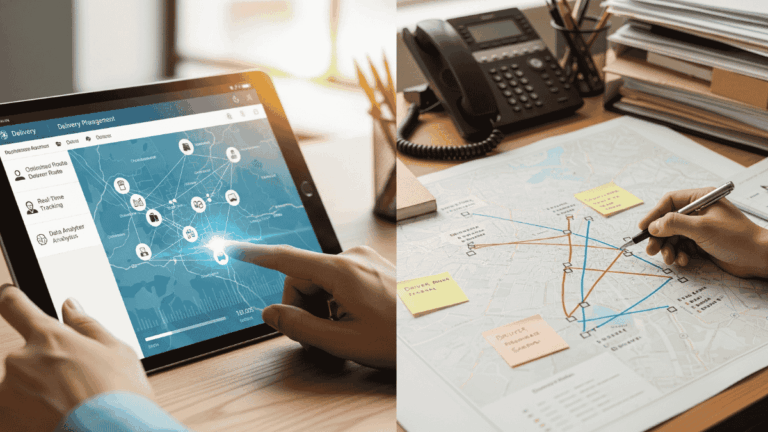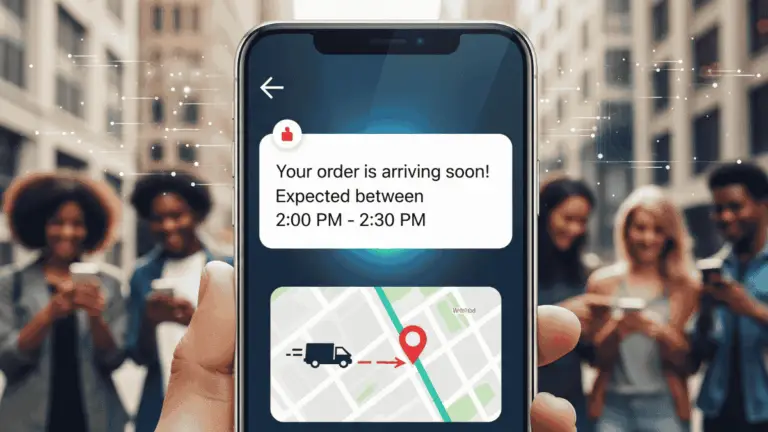Last mile delivery – the final step in the supply chain journey – has become a critical battleground for retailers and ecommerce businesses.
As consumer expectations for quick and sustainable delivery options continue to evolve, companies find themselves racing to optimize their processes even faster.
In this comprehensive guide, we will explore the challenges, technological advancements, and future trends shaping last mile delivery services.
Last Mile Delivery explained
Last mile delivery is to the final stretch of the supply chain process. It’s the phase during which goods are transported from a distribution center to the customer.
This stage is often the most expensive and time-consuming part of the shipping process. In fact, it accounts for up to 53% of total shipping costs, according to a Business Insider Intelligence report.
The importance of last mile delivery has grown exponentially with the rise of e-commerce. Customers expect faster, more flexible, and transparent delivery options.
This shift has forced businesses to rethink their strategies, placing greater emphasis on optimizing the last mile delivery logistics.
Last Mile Delivery Challenges
While crucial for customer satisfaction, last mile delivery presents several significant challenges:
- High costs.
- Delivery speed.
- Urban congestion.
- Failed deliveries.
- Lack of visibility.
These challenges directly impact customer satisfaction and business efficiency, so let’s discuss how to overcome it.
1. High costs
The individualized nature of deliveries makes this stage resource-intensive. Last mile delivery can account for up to 53% of total shipping costs.
This is due to the inefficiency of delivering small packages to multiple locations, often requiring multiple stops and longer routes.
Fuel costs, labor expenses, and even vehicle maintenance costs all contribute to the high price tag of last mile deliveries and logistics.
2. Delivery speed
Meeting customer expectations for rapid delivery can strain logistics systems.
With giants like Amazon offering same-day or next-day delivery, other businesses are under extreme pressure to match these speeds.
But unlike Amazon and other giants, they might struggle to invest in infrastructure, technology, and personnel.
3. Urban congestion
Traffic and parking issues in cities can also slow down deliveries, which in turn, increases costs. Urban areas, where a large portion of deliveries occur, come with their own set of unique challenges.
Delivery vehicles often struggle with limited parking options along busy streets or in packed parking lots. This can lead to double-parking or wasting fuel while circling blocks.
Not only does this delay deliveries, it also contributes to traffic congestion, potentially resulting in fines and increased fuel consumption.
4. Failed deliveries
When customers aren’t available to receive packages, it leads to additional costs and delays. Failed deliveries mean return trips must be scheduled, which increases fuel and labor costs.
One missed delivery can also lead to customer dissatisfaction, damage to brand reputation, and potential loss of income.
According to some estimates, failed deliveries can cost retailers up to $17.78 per package in the US.
5. Lack of visibility
Customers expect real-time updates on their deliveries, requiring advanced tracking systems. The demand for transparency in the delivery process has grown significantly.
Customers don’t just want to know exactly where their package is… They also want to know when it will arrive.
Implementing and maintaining these types of tracking systems can be costly and complex, especially for businesses with legacy logistics infrastructure.
Thankfully, last mile delivery technology continues to evolve.
Technological Advancements in Last Mile Delivery
To address these challenges, companies are leveraging various emerging technologies, from AI and software enhancements to drones and self-driving vehicles.
1. Artificial intelligence (AI)
AI assists the last mile delivery process through predictive analytics and machine learning.
It can forecast demand, optimize inventory management, and even predict potential delivery issues before they occur.
For instance, Amazon uses AI to anticipate customer orders and move products to nearby fulfillment centers before they’re purchased.
2. Route Optimization
Advanced algorithms can calculate the most efficient delivery routes. It can even take into consideration factors like traffic, weather, and delivery windows.
UPS’s ORION (On-Road Integrated Optimization and Navigation) system, for example, saves the company up to $400 million annually by optimizing delivery routes.
My Foodie Box, meanwhile, delivers fresh meals to Australians by using Locate2u’s route optimization software.
READ MORE HERE: My Foodie Box Case Study
3. Drones
While still in the early stages, drone delivery shows promise for rapid, cost-effective delivery, especially in hard-to-reach areas.
Companies like Wing (a subsidiary of Alphabet) are already conducting drone delivery trials in several countries.
Beyond last mile delivery operations, drones are also bringing tackling warehouse chaos. For example, IKEA unleashed a swarm of AI-powered warehouse drones after a year-long test run in Belgium.
IKEA’s drones are equipped with algorithms capable of identifying and photographing product locations – without crashing into obstacles.
4. Autonomous vehicles
Self-driving vehicles and robots are being tested for last mile delivery, too.
Starship Technologies, for example, has deployed autonomous robots for food and package delivery in several cities worldwide.
AV advancements have also made it possible for logistics and delivery companies to go where no normal vehicle has gone before.
Eco-Friendly Practices in Last Mile Delivery
Sustainability has become a key focus in last mile delivery, and there are several ways to make sure your last mile delivery problem go green.
1. EVs and hybrid vehicles
Electric vehicles (EVs) and hybrid vehicles are becoming popular choices for businesses aiming to reduce their carbon footprint.
These vehicles not only lower emissions but also help reduce the long-term operational costs associated with fuel.
FedEx wants to have 50% of its express pickup and delivery fleet run on electric power by 2025.
2. Sustainable packing
Companies are exploring biodegradable materials and right-sized packaging to reduce waste.
Amazon’s ‘Frustration-Free Packaging’ program has eliminated over 1 million tons of packaging materials since 2008.
But don’t despair, there are creative ways for small businesses to meet sustainable packaging guidelines. One solution for your company could be compostable packaging.
More tips here: How to create sustainable packages for your products
3. Carbon offsetting
Some companies offer carbon-neutral delivery options. DHL, for instance, has committed to zero emissions logistics by 2050.
Carbon offsetting involves compensating for the emissions of carbon dioxide (CO2) from carbon-heavy activities by investing in projects to reduce CO2 in the atmosphere.
Carbon accounting, on the other hand, is a way for businesses to reduce their environmental footprint. It involves examining the amount of carbon dioxide equivalents (CO2e) a company releases into the atmosphere.
READ MORE: Explainer: The business benefits of carbon accounting
Case Study: Last Mile Delivery in action
Retail giants are setting the standard of what customers expect from last-mile delivery success.
Amazon’s Prime Air initiative aims to deliver packages via drone within 30 minutes of ordering. Walmart is leveraging its vast network of stores as fulfillment centers to reduce delivery times and costs.
But you don’t have to be a multi-continental business to achieve these results.
GT Product Sales, a distributor of automotive spare parts in Australia, has successfully integrated Locate2u’s last-mile delivery software. It moved their business from a paper-based system to a sleek, performance-driven process.
How? GT Product Sales enhanced their route optimization, live tracking, and digital proof of delivery. This means more efficient operations and happier customers.
For more details on their journey, you can read the full case study here.
Last Mile Delivery Trends to Watch
1. Micro-fulfillment centers
Micro-fulfillment centers are small-scale, automated warehouses strategically located in urban areas. They bring inventory closer to customers, enabling faster and more efficient deliveries.
These centers often use advanced robotics and AI to manage inventory and fulfill orders quickly.
Companies like Walmart and Albertsons are adopting this model to compete with Amazon’s quick delivery times.
2. Crowdsourced deliveries
Crowdsourced deliveries leverage a network of independent contractors to make deliveries. Think of how Uber works for rides.
Platforms like Instacart for groceries and DoorDash for restaurant meals have also adopted this approach.
It offers businesses the flexibility to scale their delivery capacity and the reduce costs of maintaining a full-time delivery fleet.
However, it raises questions about worker rights and reliability, so proceed with caution.
3. IoT and blockchain
Internet of Things (IoT) devices are being used to track packages in real time. This provides detailed information about location, temperature, and handling.
Meanwhile, blockchain technology is being explored to create secure, transparent records of each step in the supply chain.
Together, these technologies can enhance visibility, reduce errors, and improve security in last mile delivery.
4. Sustainable last mile delivery solutions
With growing environmental concerns, companies are focusing on reducing the carbon footprint of their deliveries.
As mentioned, this could include using electric vehicles, optimizing routes to reduce fuel consumption, and exploring alternative delivery methods like cargo bikes in urban areas where traffic congestion is a nightmare.
Some companies are also offering carbon-neutral shipping options to environmentally conscious consumers.
5. Personalized last mile delivery experiences
This trend involves offering customers more control over when, where, and how their packages are delivered.
It might include options for specific delivery time slots, alternative drop-off locations, or real-time rerouting of packages.
Amazon’s Hub Lockers and FedEx’s Delivery Manager are examples of services that allow customers to customize their delivery experience.
Final thoughts on last mile delivery
Last mile delivery logistics can be a success, but it requires planning, the right software, and a blend of efficiency, sustainability, and customer-centricity.
As we look to the future, the importance of last mile delivery in the global economy will only grow.
Companies that can master this crucial stage of the supply chain – balancing speed, cost, and sustainability – will be well-positioned to thrive regardless of the challenges.
By embracing advanced tech solutions, businesses can overcome those few last mile delivery logistics challenges and turn it into opportunities for growth.
The future of logistics is here, and it’s being shaped one last mile at a time.
About the author
Cheryl has contributed to various international publications, with a fervor for data and technology. She explores the intersection of emerging tech trends with logistics, focusing on how digital innovations are reshaping industries on a global scale. When she's not dissecting the latest developments in AI-driven innovation and digital solutions, Cheryl can be found gaming, kickboxing, or navigating the novel niches of consumer gadgetry.

